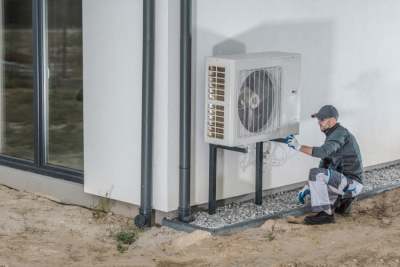Heat pumps are still relatively new in the UK, and with different types available it can be confusing to know what to look for if you want to buy an eco-friendly ethical heat pump.
Our research looks at different factors, and whilst no brands are incredibly high scoring, there is a clear difference in ethics from the top to the bottom brands, and some should be avoided.
What are heat pumps?
A survey in December 2018 showed that less than a third of people know what heat pumps are.
Technologically, they are just fridges in reverse. They move outside heat – either from the air or from the ground – into your house. They are astoundingly efficient, delivering three to four units of heat for each unit of electricity needed to run them.
They can reduce your carbon footprint from heating by two-thirds or more, making them the eco-friendly option for home heating.
How common are heat pumps in the UK now?
Heat pumps are still rare in the UK. About 55,000 were installed in 2021 in the UK, making up just 3% of new heating systems installed that year.
But in some areas like North America, parts of Europe, and China, they are widely used. 29% of heating demand in Sweden is covered by heat pumps (showing they can work effectively in cold climates), and in the US 40% of new family homes have heat pumps.
The UK government hopes to reach 600,000 heat pump installations per year by 2028 – an eleven-fold increase from 2021. (In our last guide two years ago, a twenty-fold increase was needed, so installations are on the up).
But, there is a shortage of heat pump installers.
In 2022, the Social Market Foundation released a report called ‘Installing for time?’, which outlines how installing a heat pump requires training in significantly different techniques from those involved in fitting and maintaining a gas boiler.
The UK lacks trained installers and one of the report’s recommendations is that policymakers launch an engaging recruitment campaign to attract new installers.
Why make the switch to heat pumps?
Mike Childs, Head of Science, Policy and Research at Friends of the Earth says,
“I got an air-source heat pump two years ago and it’s kept our home warm, including through a cold north-of-England winter. It extracts heat from the air outside, even when it’s freezing cold, and uses it to heat the water in our radiators and in our hot water tank. It doesn’t make the water as hot as a gas-fired boiler, so to ensure our house is warm enough it runs for longer and we’ve increased the size of our radiators. The heat pump itself is in our backyard where it hums away quietly.”




